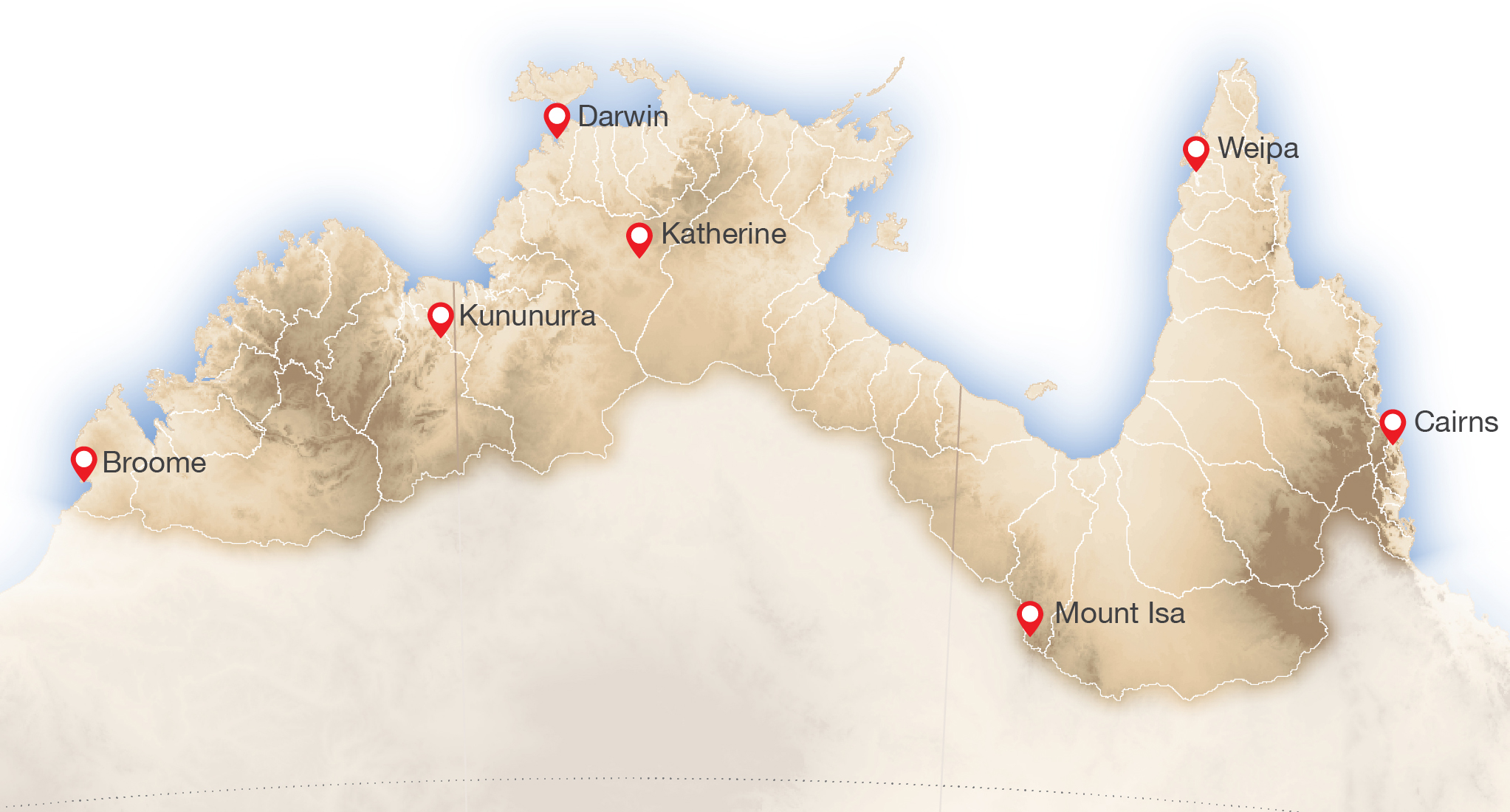Indigenous cultural and natural resource management (ICNRM) creates many environmental, social, cultural and economic benefits for all Australians. The ICNRM sector has grown quickly in recent decades, primarily driven by investment from Indigenous communities and key federal and state government agencies focused on Indigenous and environmental issues (e.g. Working on Country, Indigenous Protected Area [IPA] and Indigenous ranger programs). The number of Indigenous ranger groups, organisations and enterprises continues to grow, as does the geographic spread of the work. This results in ICNRM organisations and enterprises sometimes operating on a variety of land tenures (e.g. Native Title, Aboriginal freehold, pastoral leasehold, IPAs and national parks) and through diverse partnerships that may have different management regimes and aims. The future resilience of the sector will require a larger and more diverse set of funding and resourcing options.
There is potential to diversify investment
Major expansion of direct government funding of the ICNRM sector remains unlikely and as a result, the sector is under-resourced and vulnerable to policy change. To keep growing and getting stronger, ICNRM needs larger and more diverse funding sources. This means generating new investment for ICNRM enterprises from Indigenous organisations, the corporate sector, philanthropic and non-government organisations, and ICNRM fee-for-service customers and investors. However, there has been little research done into the investment landscape and future options of the ICNRM sector.
In this project, we use ‘investment’ in a broad sense, to encompass financial and non-financial investment, income (e.g. fee-for-service, carbon credits), and any form of input (e.g. labour, advisory service) into ICNRM programs. Our use of ‘investment’ does not imply that an investor will, or seek to, receive financial gain from their investment.
What makes investors choose to invest?
This research project considered the future opportunities and pathways to diversify investment in ICNRM enterprises and organisations – essentially, ‘what makes investors choose to invest?’. The research team investigated the current and potential role of four key investor groups (Indigenous, corporate, philanthropic and government fee-for-service customers or investors) to support and enable further growth of the ICNRM sector.
It considered the investment logics (motivations, priority areas and impacts sought) and the performance assessment needs of these investor groups, and identified challenges to investment in the ICNRM sector and future investment interests. The work builds upon and supports the efforts of Indigenous leaders from across northern Australia who seek to diversify funding for the ICNRM sector.
Indigenous community investment in the ICNRM sector
The project worked with Indigenous groups, communities and organisations – all co-investors in ICNRM. Partnerships in three local ICNRM contexts – Kalan Enterprises (Qld), Kowanyama (Qld) and Larrakia Rangers (NT) – demonstrated how local community co-investment in ICNRM occurs alongside external investment. Community investment includes Traditional Owner family support, which enables rangers to achieve organisational objectives and aids ranger recruitment and retention.
Properly positioning ICNRM organisations within local political, ownership and organisational structures is also important to the community co-investment they receive. Kalan, Kowanyama and Larrakia were also important collaborators because of their historical strengths in ICNRM income diversification. Their combined experience includes partnerships with international non‑government organisations, collaborations with industry clients and customers, and experience in undertaking activities such as civil construction to improve the size, resilience and skill base of their organisations. ICNRM organisations must be supported by Indigenous community co-investment in their activities for them to be sustainable in the long term.

This research is relevant to Indigenous cultural and natural resource management across northern Australia.
The CSIRO project team included Kirsten Maclean (project leader), Marcus Barber, Taryn Kong, Jane Addison, and Marlee Hutton. The project was guided by an Indigenous-led Steering Committee chaired by Ricky Archer from the North Australian Indigenous Land and Sea Management Alliance and representatives from the Kimberley Land Council, the Northern Land Council, Kalan Enterprises, Kowanyama Aboriginal Land and Natural Resource Management Office, Bush Heritage Australia and the Australian Land Conservation Alliance.
Field workshop partners are Kalan Enterprises in Coen, Cape York; Larrakia Nation in Darwin; and the Kowanyama Aboriginal Land and Natural Resource Management Office (supported by Abm Elgoring Ambung, the Native Title Corporation for Kowanyama).
Key Australian Government partners are the Department of Agriculture, Water and the Environment, and the National Indigenous Australians Agency.
This project was completed in June 2021.
Contact:
Kirsten Maclean, CSIRO
E: kirsten.maclean@csiro.au
Marcus Barber, CSIRO
E: marcus.barber@csiro.au